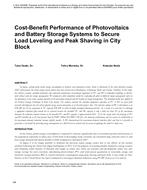The problems associated with VAV systems are most often due to improper design and/or control of the system. Unfortunately, engineers and operations and maintenance (O&M) personnel usually associate these problems with equipment of low quality or with the VAV design concept. However, the problems many associate with VAV systems can be eliminated, and the VAV concept works well when applied to proper situations and designed correctly. For most applications, a VAV system using true boxes will provide the best system at the lowest first cost and operating cost. The advantages of this system include increased levels of occupant control, more flexibility when space use is changed, and reduced components to maintain (no box fans). To maximise VAV system advantages, designers and operators must thoroughly understand the principles of a VAV system. Proper design, component selection, and operation guarantee that the system will perform correctly and maintain occupant satisfaction. Presents information from the viewpoint of a junior consulting engineer who has become familiar with VAV systems through participation in commissioning projects and covers – the theory of VAV systems, the benefits of their use, and a few of the common problems.
Units: Dual
KEYWORDS: year 1997, Variable volume air conditioning, optimising, failure, constant volume air conditioning, comparing, peak load
Citation: Symposium, ASHRAE Transactions, Vol.103, Part 2, Boston 1997
Product Details
- Published:
- 1997
- Number of Pages:
- 7
- File Size:
- 1 file , 810 KB
- Product Code(s):
- D-16719


